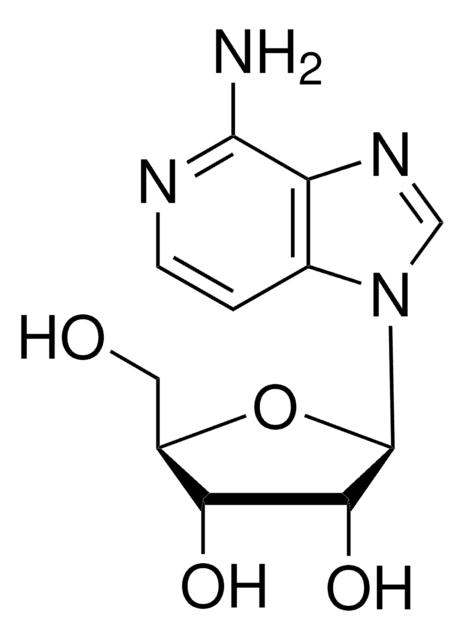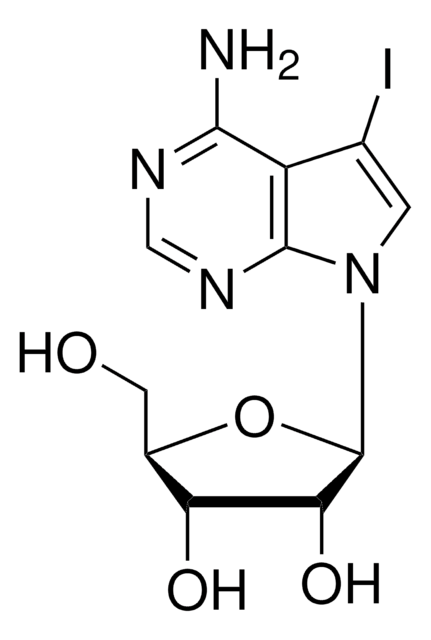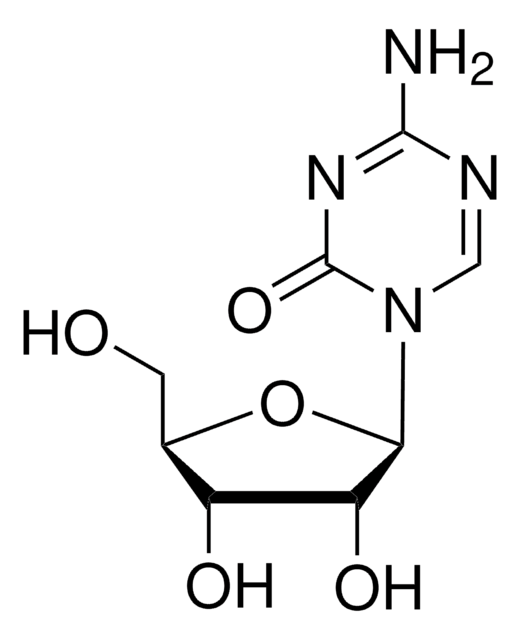T0642
Tubercidin
from Streptomyces tubercidicus, ~95%
Synonym(s):
7-Deazaadenosine
About This Item
Recommended Products
biological source
Streptomyces tubercidicus
assay
~95%
form
powder
color
off-white
antibiotic activity spectrum
fungi
parasites
viruses
mode of action
DNA synthesis | interferes
SMILES string
O[C@H]1[C@@H](O)[C@H](N2C=CC3=C2N=CN=C3N)O[C@@H]1CO
InChI
1S/C11H14N4O4/c12-9-5-1-2-15(10(5)14-4-13-9)11-8(18)7(17)6(3-16)19-11/h1-2,4,6-8,11,16-18H,3H2,(H2,12,13,14)/t6-,7-,8-,11-/m1/s1
InChI key
HDZZVAMISRMYHH-KCGFPETGSA-N
Gene Information
rat ... Adora1(29290)
Looking for similar products? Visit Product Comparison Guide
General description
Application
Biochem/physiol Actions
Other Notes
signalword
Danger
hcodes
pcodes
Hazard Classifications
Acute Tox. 2 Oral
Storage Class
6.1A - Combustible acute toxic Cat. 1 and 2 / very toxic hazardous materials
wgk_germany
WGK 3
flash_point_f
Not applicable
flash_point_c
Not applicable
ppe
Eyeshields, Faceshields, Gloves, type P2 (EN 143) respirator cartridges
Choose from one of the most recent versions:
Certificates of Analysis (COA)
Don't see the Right Version?
If you require a particular version, you can look up a specific certificate by the Lot or Batch number.
Already Own This Product?
Find documentation for the products that you have recently purchased in the Document Library.
Customers Also Viewed
Our team of scientists has experience in all areas of research including Life Science, Material Science, Chemical Synthesis, Chromatography, Analytical and many others.
Contact Technical Service











